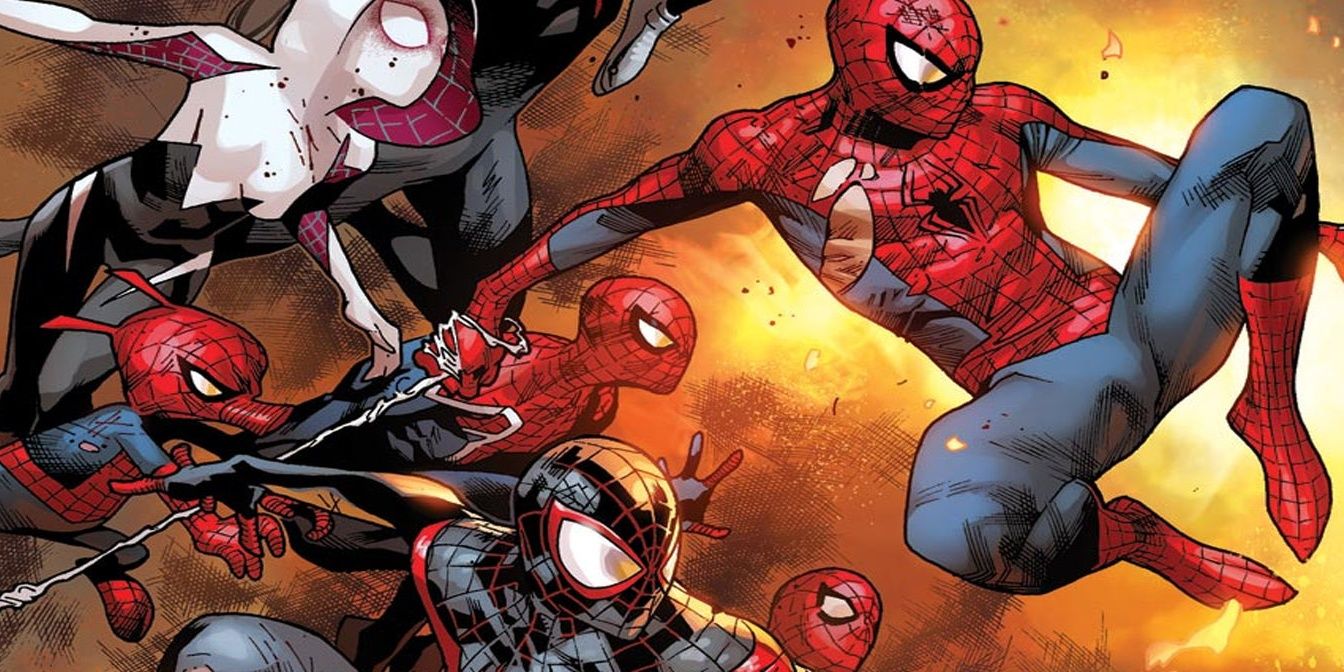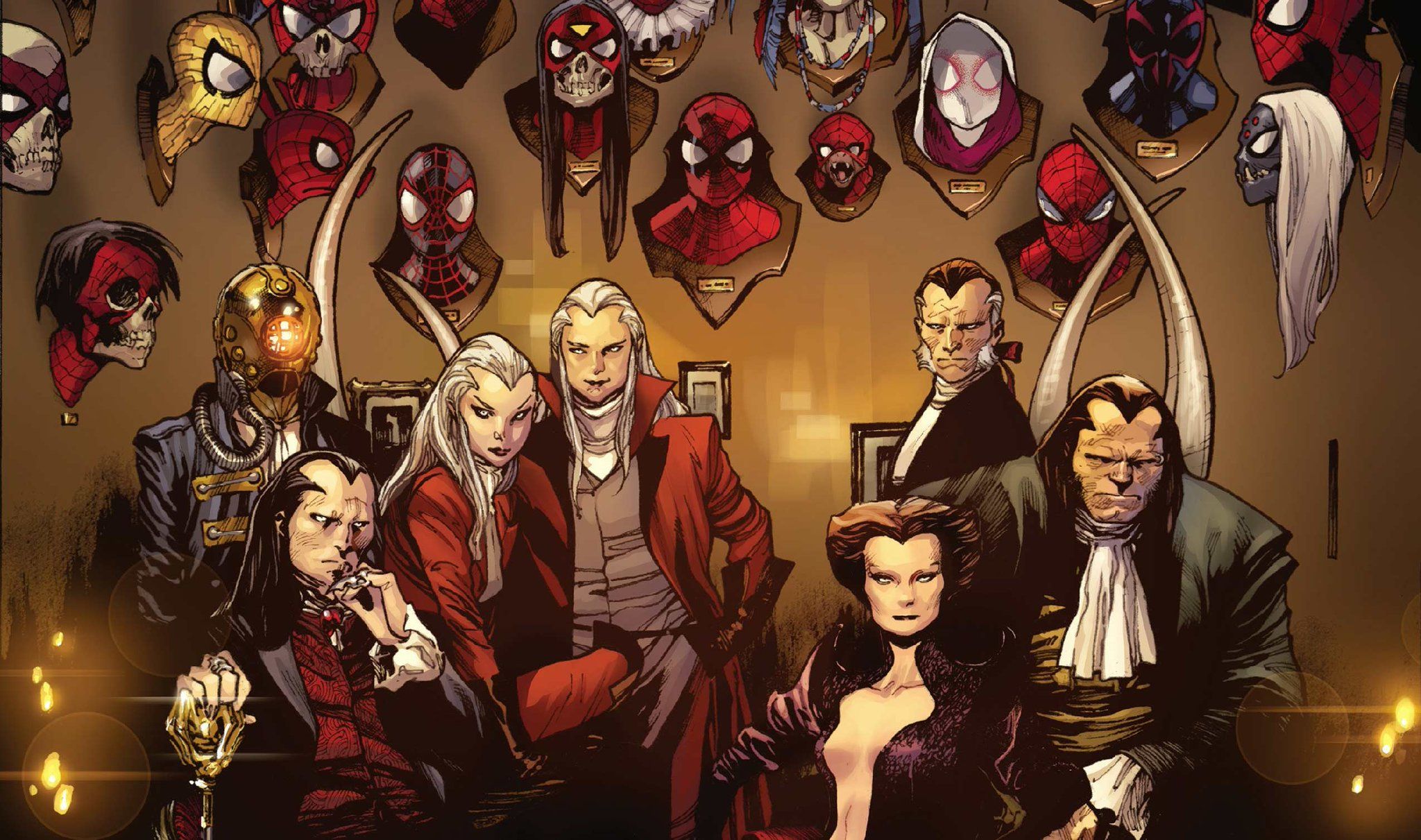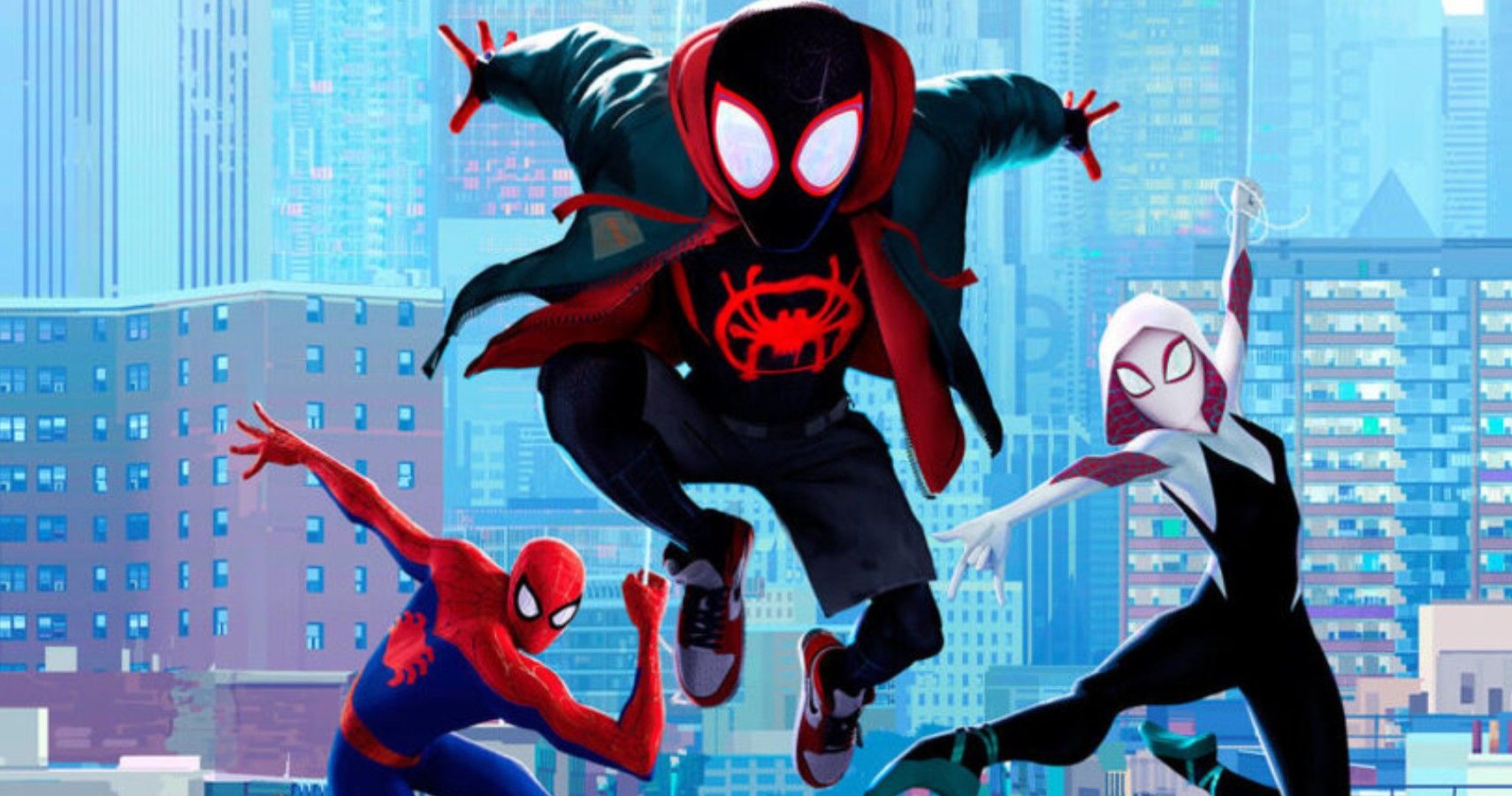One of the most ambitious Spider-Man crossovers of all time was Spider-Verse, which brought together web-slingers from across the Marvel Multiverse for an epic battle against Morlun and his twisted family that preyed upon animal totems mercilessly. In addition to bringing together the alternate universe wall-crawlers that had already been established, the event saw the creation of new fan-favorite alternate universe characters who would go on to thrill fans in comics, television and film after the initial crossover.
Here's a complete reading guide to the 2014 crossover event by Dan Slott, Olivier Coipel, Giuseppe Camuncoli, Wade Von Grawbadger, Cam Smith and Justin Ponsor, including the build-up, the most important tie-in issues and how the event influenced the Marvel Universe, both in comics and on the big screen.
BEFORE SPIDER-VERSE
J. Michael Straczynski and John Romita, Jr. created Morlun in 2001's The Amazing Spider-Man #30, which established him as a new villain that devoured the life essence of totem-based superheroes like a vampire. With Peter Parker as a spider totem, Morlun hunted him on two separate occasions, and Peter was reborn after giving into his spider nature in their second confrontation. During the 2014 crossover event Original Sin, another arachnid hero, Silk, was released from a protective bunker. After sensing the arrival of an important new spider totem, Morlun resumed his hunt.
Marvel Comics' 2014 Free Comic Book Day special featured an original story, Spider-Man: Staging Ground, by Slott, Camuncoli, John Dell and Edgar Delgado. Serving as a prelude to the crossover event, the short story revealed that Morlun had mysteriously gained the ability to travel through the Marvel Multiverse itself, as he arrived on Earth-311, the 1602 world of the Elizabethan Marvel. Interrupting a performance at the Globe Theater, Morlun easily killed and drained Marvel 1602 Spider-Man, departing as the world came to an end.
SPIDER-VERSE'S CORE ISSUES
The prologue to the main event was told in The Amazing Spider-Man #4-8 (vol. 3) while its impending impact was also seen in Superior Spider-Man #32-33 and Spider-Man 2099 #5 (vol. 2). The five-issue miniseries Edge of Spider-Verse would introduce many of the alternate universe superheroes that would subsequently appear in the event, most notably Spider-Gwen, created by Jason Latour, Robbi Rodriguez and Rico Renzi, and SP//der, created by Gerard Way and Jake Wyatt.
The core series was contained to The Amazing Spider-Man #9-15, bookended by two issues of Spider-Verse that brought the Spider-People of the Multiverse together. These are the most vital issues to the crossover's overall story while Edge of Spider-Verse #2 and #5 would introduce Spider-Gwen and SP//der, respectively. Other tie-ins would explore what the more ancillary characters were up to, including Spider-Man 2099, the Scarlet Spiders and Spider-Woman Jessica Drew.
SPIDER-VERSE'S IMPACT ON THE MARVEL MULTIVERSE
The most immediate fallout of Spider-Verse was the introduction of new characters including Spider-Gwen and Spider-Punk, with the former receiving her own, long-running solo comic book series following her adventures on her native Earth-65. Alternate universe characters, like Spider-Man Noir and Spider-Ham would be restored to prominence, receiving revival miniseries of their own. The event's success set the stage for future Spider-Man crossovers, including Spider-Geddon and a new Spider-Verse miniseries that brought the various heroes together again.
Beyond comic books, the impact of the crossover is perhaps even more visible. Spider-Gwen would appear on animated television series Marvel Rising while the event itself would be loosely adapted in Ultimate Spider-Man: Web Warriors, the third season of the Disney XD animated series. The web-based -- no pun intended -- video game Marvel: Avengers Alliance would adapt Spider-Verse in a massive update, as would the popular mobile game Marvel: Future Fight.
Of course, the crossover had its notable inspiration on the 2018 animated film Spider-Man: Into the Spider-Verse, which brought heroes from across the Marvel Multiverse to stop a plot by Kingpin and his minions after they developed a universe-connecting particle accelerator. The film featured Spider-Gwen and SP//der in prominent roles, alongside Miles Morales, Spider-Ham, Spider-Man Noir and the Peter Parker of an alternate universe, and it took several other cues from the crossover event and subsequent comics spinning directly out of it. The film would go on to become a commercial and critical success, earning the Academy Award for Best Animated Film.
The crossover's writer Dan Slott was inspired after working on the 2010 video game Spider-Man: Shattered Dimensions, which similarly brought together various Spider-Men together on a multiversal adventure. Slott decided to expand on the premise in comics, leading to Spider-Verse after years of planning. With the creation of fan-favorite characters that inspired their own multimedia appearances and wave of merchandising, Spider-Verse remains one of the most influential crossovers to emerge from Marvel in the past decade. And with the multiversal web-slingers continuing to swing throughout the Marvel Multiverse nearly six years since the crossover's launch, the impact of the event is still very much being felt today.




